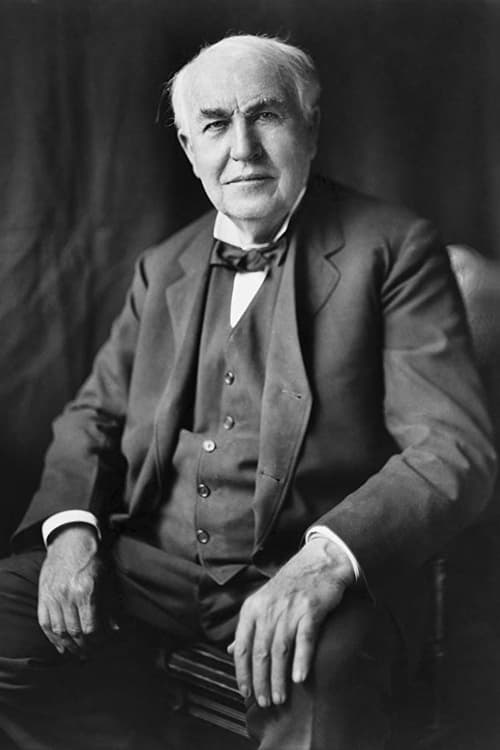
Thomas A. Edison
出生 : 1847-02-11, Milan, Ohio, USA
死亡 : 1931-10-18
略歴
Thomas Alva Edison (February 11, 1847 – October 18, 1931) was an American inventor and businessman who has been described as America's greatest inventor. He developed many devices in fields such as electric power generation, mass communication, sound recording, and motion pictures. These inventions, which include the phonograph, the motion picture camera, and the long-lasting, practical electric light bulb, have had a widespread impact on the modern industrialized world. He was one of the first inventors to apply the principles of organized science and teamwork to the process of invention, working with many researchers and employees. He established the first industrial research laboratory.
Edison was raised in the American Midwest; early in his career he worked as a telegraph operator, which inspired some of his earliest inventions. In 1876, he established his first laboratory facility in Menlo Park, New Jersey, where many of his early inventions were developed. He later established a botanic laboratory in Fort Myers, Florida in collaboration with businessmen Henry Ford and Harvey Firestone, and a laboratory in West Orange, New Jersey that featured the world's first film studio, the Black Maria. He was a prolific inventor, holding 1,093 US patents in his name, as well as patents in other countries. Edison married twice and fathered six children. He died in 1931 of the complications of diabetes.

Director
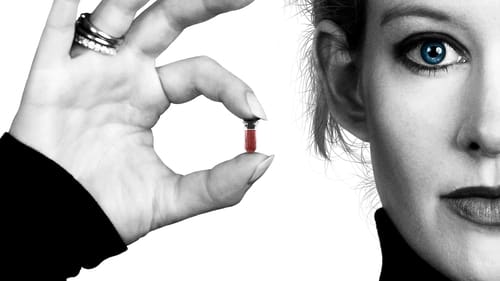
Self (archive footage)
With a magical new invention that promised to revolutionize blood testing, Elizabeth Holmes became the world’s youngest self-made billionaire, heralded as the next Steve Jobs. Then, overnight, her 10-billion-dollar company dissolved. The rise and fall of Theranos is a window into the psychology of fraud.

Himself (archive footage)
By the time he died in 1931, Thomas Alva Edison was one of the most famous men in the world. The holder of more patents than any other inventor in history, Edison had achieved glory as the genius behind such revolutionary inventions as sound recording, motion pictures, and electric light. Born on the threshold of America's burgeoning industrial empire, Edison's curiosity led him to its cutting edge. With just three months of formal schooling, he took on one seemingly impossible technical challenge after another, and through intuition, persistence, and a unique team approach to innovation, invariably solved it. Driven and intensely competitive, Edison was often neglectful in his private life and could be ruthless in business. Challenged by competition in the industry he'd founded, Edison launched an ugly propaganda campaign against his rivals, and used his credibility as an electrical expert to help ensure that high-voltage electrocution became a form of capital punishment.
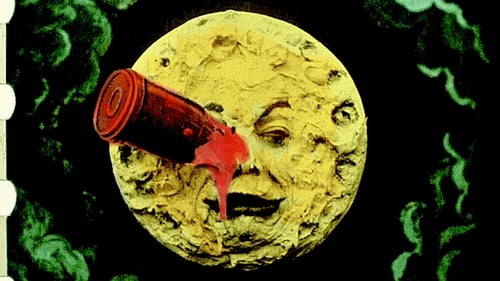
Self - Filmmaker (archive footage)
映画創世記に、誰よりも映画を愛し、その可能性を追求した映画の父-ジョルジュ・メリエスの成功と挫折の人生を、彼が生きた時代背景と共に追ったドキュメンタリー。 偶然見つかった幻のカラーフィルムから始まった『月世界旅行』のリストア作業全工程と、トム・ハンクス、ミシェル・ゴンドリー、ジャンピエール・ジュネ等へのインタビューを通して、今もなお多くの映画人を魅了しているメリエスの映画魔術に迫る。

HImself (archival footage) (uncredited)
Documentary focusing on the film careers F.W. Murnau, Frank Borzage and William Fox and their impact on the history of cinema.

Himself (archive footage)
A history of the Edison Company, the pioneering film production company begun by Thomas A. Edison. Included are more than 140 complete films produced by the company between 1891 and 1918, along with interviews with film historians and archivists, and commentary by Charles Musser, a noted film historian and authority on the films of the Edison Company.
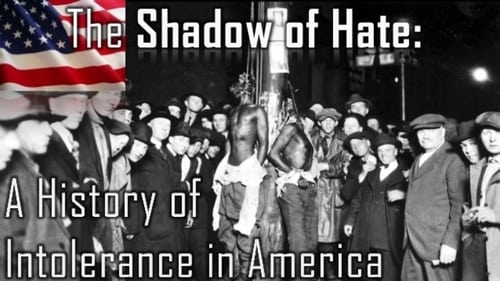
(archive footage)
The film expresses the history of oppression, discrimination, violence and hate in America. It was nominated for an Academy Award for Best Documentary Short.

Self (archive footage)
Based on eight years of continued prosperity, presidents and economists alike confidently predicted that America would soon enter a time when there would be no more poverty, no more depressions -- a "New Era" when everyone could be rich. But when reality finally struck, the consequences of such unbound optimism shocked the world.

Himself (archive footage) (uncredited)
A documentary overview of silent cinema pioneer Edwin S. Porter.

Himself (archive footage)
Feature-length compilation of 1920s newsreel footage, with commentary about news, sports, lifestyles, and historical figures.

This short was released in connection with the 20th anniversary of Warner Brothers' first exhibition of the Vitaphone sound-on-film process on 6 August 1926. The film highlights Thomas A. Edison and Alexander Graham Bell's efforts that contributed to sound movies and acknowledges the work of Lee De Forest. Brief excerpts from the August 1926 exhibition follow. Clips are then shown from a number of Warner Brothers features, four from the 1920s, the remainder from 1946/47.

Self
A six-part documentary recording the 74-year-old Edison's collaborations with his staff, conversations with industrial leaders, and supervision of the factory's production line. The majority of the film (parts 3, 4, and 5) chronicles Edison's trip to the incandescent light bulb factory and details its manufacturing process.

Producer
Ojo and Unc Nunkie are out of food, so they decide to journey to the Emerald City where they will never starve. Along the way, they meet Mewel, a waif and stray (mule) who leads them to Dr. Pipt, who has been stirring the powder of life for nine years. Ojo adds plenty of brains to Margolotte's Patchwork servant before she is brought to life with the powder. When Scraps does come to life, she accidentally knocks the liquid of petrifaction upon Unc Nunkie, Margolotte, and Danx (daughter Jesseva's boyfriend). So all go on separate journeys to find the ingredients to the antidote. (Of course Jesseva has Danx shrunken to take with her, which causes trouble with Jinjur.) Of course, no one ever told Ojo that some of the ingredients were illegal to obtain...

Producer
A comic sketch that features two players who think each one is deaf, causing them to shout. Part of the Edison Kinetophone Collection. The Kinetophone was a fairly complex mechanical means of creating talking pictures. Unlike previous systems, in which actors would be required to lip sync to preexisting recordings on camera, the Kinetophone was one of the earliest film technologies to record sound at the same time as the image.

Producer
The Edison Quartet perform songs as blacksmiths. This was one of 200 projects produced using the Edison Kinetophone system. The Kinetophone was a fairly complex mechanical means of creating talking pictures. Unlike previous systems, in which actors would be required to lip sync to preexisting recordings on camera, the Kinetophone was one of the earliest film technologies to record sound at the same time as the image.

Producer
On February 17, 1913, after many years of R+D, Thomas Alva Edison introduced the Edison Kinetophone to an enthusiastic New York audience. The Kinetophone was a fairly complex mechanical means of creating talking pictures. Unlike previous systems, in which actors would be required to lip sync to preexisting recordings on camera, the Kinetophone was one of the earliest film technologies to record sound at the same time as the image. More than 200 of these Kinetophones were produced between 1913 and 1914, but only a handful of the films and their accompanying sound cylinders survive.
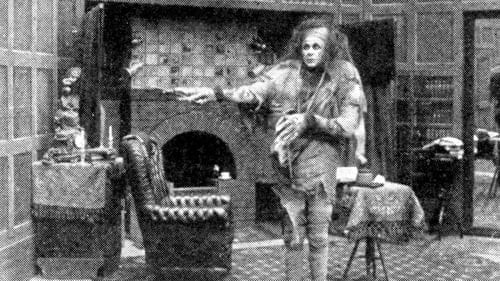
Producer
Frankenstein, a young medical student, trying to create the perfect human being, instead creates a misshapen monster. Made ill by what he has done, Frankenstein is comforted by his fiancée; but on his wedding night he is visited by the monster.

Director
Documentary footage of the author and his two daughters at home.

Producer
Klingsor seeks admission to the Holy Grail. Evil summons Kundry. Herzeloid appears with the child Parsifal. Crowning of Amfortas. Wounding of Amfortas. Carrying Amfortas to his bath. Kundry brings relief to Amfortas. Parsifal reproached for killing the Swan. Kundry succumbs to Evil. Knights entering the Holy Grail. Parsifal unmoved. Klingsor summons Kundry. Parsifal enters the Magic Garden. Kundry kisses Parsifal. Parsifal calls upon the Saviour. Parsifal repulses Kundry. Klingsor hurls the Sacred Spear. Destruction of the Magic Garden. Guernemanz restores Kundry. Parsifal appears with Sacred Spear. Kundry washes Parsifal's feet. Amfortas tears open his wound. Parsifal heals Amfortas. Parsifal becomes King of the Holy Grail.

Producer
With a tree-lined river bank dominating the top and back of the frame, the Charles River flows toward a stationary camera. A flotilla of canoes passes by. Some have one occupant, some two, a few three or four. Some men wear ties, a few wear boaters. Only a handful of the canoes have more than one paddler. None go quickly. There are more than 40 canoes packed close together. Off camera, down left, they seem to make a circle and head back to enter the frame from the left.

Director
Excerpts of a 1903 football game between the University of Chicago and the University of Michigan. Includes views of the uniformed players, the spectators in the stadium and surrounding stands, and the game itself.

Director
Shows a tramp enter and try to ride a wheel, from which he makes some very ludicrous falls and gives up in despair, after which an artist enters and jumps rope on a wheel. A very laughable subject.

Director
President McKinley taking the Oath.

Director
"'Neidert,' of national fame, does stunts on his wheel that are simply wonderful. Makes his bicycle rear up

Director
Brooklyn Jubilee Peace Parade

“This film is remarkable in several respects. In the first place, it is full life-size. Secondly, it is the only accurate recent portrait of the great inventor. The scene is an actual one, showing Mr. Edison in working dress engaged in an interesting chemical experiment in his great Laboratory. There is sufficient movement to lead the spectator through the several processes of mixing, pouring, testing, etc. as if he were side by side with the principal. The lights and shadows are vivid, and the apparatus and other accessories complete a startling picture that will appeal to every beholder.” (Edison Catalog)

Producer
A short film depicting the execution of Mary, Queen of the Scots. Mary is brought to the execution block and made to kneel down with her neck over it. The executioner lifts his axe ready to bring it down. After that frame Mary has been replaced by a dummy. The axe comes down and severs the head of the dummy from the body. The executioner picks up the head and shows it around for everyone else to see. One of the first camera tricks to be used in a movie.









